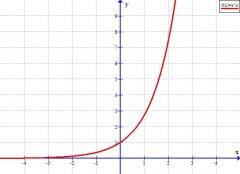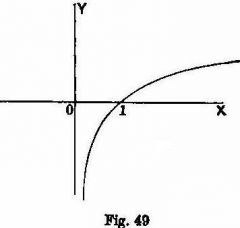![]()
![]()
![]()
Use LEFT and RIGHT arrow keys to navigate between flashcards;
Use UP and DOWN arrow keys to flip the card;
H to show hint;
A reads text to speech;
68 Cards in this Set
- Front
- Back
|
domain:
|
all possible x inputs
|
|
|
domain 1/x
|
x cannot =0
|
|
|
domain √x and all other even roots
|
x must be greater than or equal to 0
|
|
|
domain tan x
|
x cannot be any
odd number pi / 2 (pi/2, 3pi/2, -pi/2) |
|
|
domain logx
|
x>0 (x cannot be less than OR equal to 0)
|
|
|
inverse fxn definition
|
y=f(x) then x=f^-1(y)
**f(x) must satisfy HLT, so its inverse satisfies VLT |
|
|
domain/range of inverse functions
|
domain of f(x) is range of its inverse, range of f(x) is domain of its inverse
|
|
|
how to get a function's inverse when one does not exist
|
restrict the domain to allow HLT to pass
|
|
|
what to restrict y=sinx domain to to allow for sin^-1(x)
|
restrict from -pi/2 to pi/2
|
|
|
what to restict y=cosx domain to, to allow for cos^-1(x)
|
0 to pi
|
|
|
π/6
|
30 degrees
|
|
|
sin0
|
0
|
|
|
cos0
|
1
|
|
|
tan 0
|
0
|
|
|
sin π/6
|
1/2
|
|
|
cos π/6
|
√3/2
|
|
|
tan π/6
|
1/√3
|
|
|
sin π/4
|
1/√2
|
|
|
cos π/4
|
1/√2
|
|
|
tan π/4
|
1
|
|
|
sin π/3
|
√3/2
|
|
|
cos π/3
|
1/2
|
|
|
tan π/3
|
√3
|
|
|
sin π/2
|
1
|
|
|
cos π/2
|
0
|
|
|
tan π/2
|
DNE
|
|
|
(sinx)^2
|
1- (cosx)^2
|
|
|
(cosx)^2
|
1-(sinx)2
|
|
|
(secx)^2
|
1+(tanx)^2
|
|
|
(cscx)^2
|
1+(cotx)^2
|
|
|
pythagorean ID's : 1=
|
(sinx)^2+(cosx)^2
(secx)^2-(tanx)^2 (cscx)^2-(cotx)^2 |
|
|
odd function
|
f(x)=-f(x)
|
|
|
even function
|
f(x)=f(-x)
|
|
|
sin: odd or even function
|
sin=ODD
|
|
|
cos: odd or even function
|
EVEN
|
|
|
sin2x
|
2sinxcosx
|
|
|
(sinx)^2
|
1/2(1-cos2x)
|
|
|
(cosx)^2
|
1/2(1+cos2x)
|
|
|
sin(x+y)
|
sin(y) * cos(x)+ sin(x)* cos(y)
|
|
|
cos(x+y)
|
cos(x)*cos(y)-sin(x)*sin(y)
|
|
|
sinx: domain and range
|
domain: all real numbers
range: [-1,1] |
|
|
cosx: domain and range
|
domain: all real numbers
range: [-1,1] |
|
|
tanx: domain and range
|
domain: x cannot equal any
odd π/ 2 range: all real numbers |
|
|
sin^-1 (1/2)
|
π/6
|
|
|
graph of y= e^x
|

|
|
|
logx graph
|

|
|
|
log x =n
b |
b^n=x
|
|
|
log(ac)
|
log a + log c
|
|
|
log b
b |
1
|
|
|
log a^c
b |
c*loga
|
|
|
log (x)^b
b |
logx/logb
|
|
|
log 1
|
0
|
|
|
to find the domain and range of a composite function f(g(x))
|
1) x must be in domain of g
2) g(x) must be in domain of f |
|
|
f(x) +c
|
shift up c
|
|
|
f(x+c)
|
shift left c
|
|
|
f(x-c)
|
shift right by c
|
|
|
f(x)-c
|
shift down c
|
|
|
c*f(x)
|
vertical stretch by c times
|
|
|
f(cx)
|
horiztonal shrink by c times
|
|
|
f(c/x)
|
vertical stretch
|
|
|
sin2x
|
period shrinks by 2: so the period becomes π
|
|
|
-f(x)
|
reflect about the y axis
|
|
|
f(-x)
|
reflect about the x axis
|
|
|
what does the slope of a tangent line indicate
|
INSTANTANEOUS rate of change
|
|
|
limit as x approaches 0+
1/sinx |
DNE (oscillates infinitely quickly at x=0)
|
|
|
lim x-> + infinity tan^-1(x)
|
π/2
|
|
|
lim x->- infinity of 1/x
|
0
|
|
|
lim x-> - infinity sinx
|
DNE (oscillates)
|

